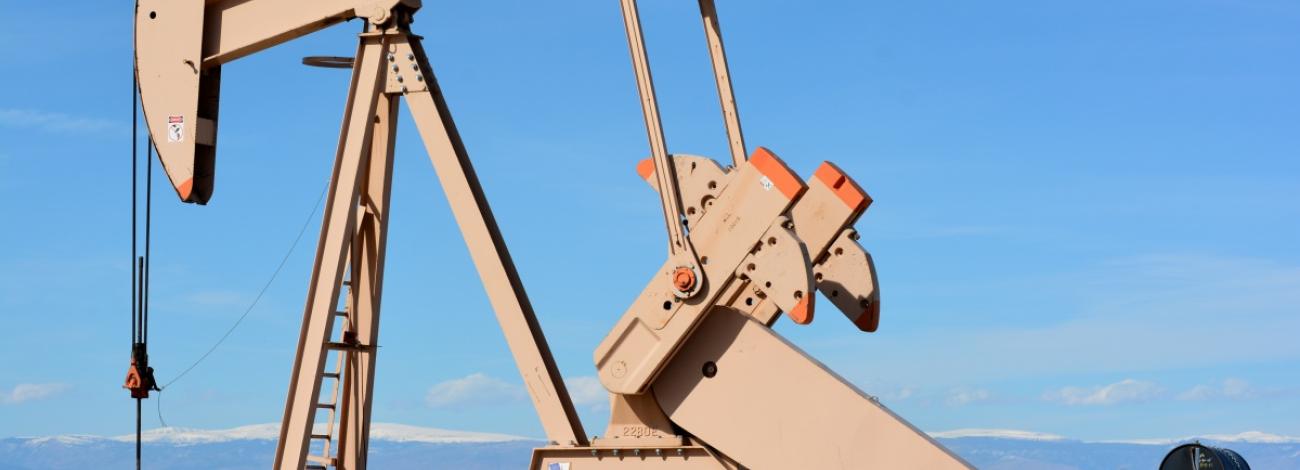
About the BLM Oil and Gas Program
Americans enjoy a quality of life today that depends largely upon a stable and abundant supply of affordable energy. The energy portfolio managed by the BLM includes oil and gas, coal, oil shale, tar sands, and renewable sources of energy such as wind, solar and geothermal.
The BLM manages the Federal government’s onshore mineral estate – about 700 million acres (30% of the United States) held by the BLM, U.S. Forest Service and other Federal agencies and surface owners -- for the benefit of the American public. It also manages some aspects of the oil and gas development for Indian tribes.
Oil and gas produced from the Federal mineral estate are a significant portion of the nation’s energy mix. For fiscal year (FY) 2024, sales of oil, gas, and natural gas liquids produced from the Federal mineral estate accounted for approximately 15 percent of domestically produced oil and 9 percent of domestically produced natural gas.
But not every acre of that land is being developed for energy. About 22 million Federal acres were under lease to oil and gas developers at the end of FY 2024. Of that, about 12.4 million acres are producing oil and gas in economic quantities from over 91,000 wells on over 23,500 producing oil and gas leases.
All Federal oil and gas royalty, rental fees, and bonus bid revenue is split in about half between the U.S. Treasury and the state where development occurred. The amount of annual revenue that Federal mineral development provides to the U.S. Treasury is second only to that provided by the Internal Revenue Service.
- Laws and Regulations
The BLM’s authority to manage the public’s oil and gas resources in the 48 contiguous states comes from two laws -- Mineral Leasing Act of 1920 as amended and the Mineral Leasing for Acquired Lands Act of 1947. Leasing authority in Alaska comes largely from the Department of the Interior Appropriations Act, Fiscal Year 1981. Leasing regulations derived from these statutes are located in Title 43 of the Code of Federal Regulations, groups 3000, 3100, 3120, 3130, and 3140. In addition, regulation under Mineral Lands and Mining Title 30 U.S.C. that may pertain include, Mineral Lands and Regulations in General (Ch.2, Sec.21); Lands Containing Coal, Oil, Gas, Salts, Asphaltic Materials, Sodium, Sulphur, and Building Stone (Ch.3, Sec.71); Lease of Oil and Gas Deposits in or Under Railroads and Other Rights-of-Way (Ch.5 Sec. 301); Federal Oil and Gas Royalty Management Act (Ch.29 Sec. 1701). The code is a publication that can be found in law libraries, most larger libraries, or government depository libraries, and an electronic version is available from the Government Printing Office.
The Federal Oil and Gas Royalty Management Act, 30 U.S.C. 1701 et seq, provides authority regarding records, inspection, and enforcement for onshore oil and gas operations, which the Department of the Interior's Office of Natural Resources Revenue (ONRR) manages.
When leasing minerals under U.S. Forest Service management, the Mineral Leasing Act and the Mineral Leasing for Acquired Lands Act grant the Forest Service the authority to make decisions and implement regulations concerning the leasing of the lands it manages. The BLM administers the lease but the Forest Service regulates surface impacts. The Acts also require that all public lands that are available for oil and gas leasing be offered first by competitive leasing.
- Indian Tribes and Bureau of Indian Affairs (BIA)
While the BLM provides technical assistance to Indian tribes and Indian mineral owners, the BLM does not lease Indian minerals. The BLM offers technical assistance to the BIA on mineral leasing issues. After a mineral lease is issued, the BLM is the arm of the Secretary of the Interior regulating develpment. Those tasks include, but are not limited to, resource evaluation, approval of drilling permits, mining and reclamation, production plans, mineral appraisals, inspection and enforcement, and production verification. The following are some of the laws and regulations for oil and gas leasing and development of Indian trust or restricted fee lands:
- Mineral leasing on tribal lands is governed by Indian Mineral Leasing Act of 1938 (25 U.S.C. 396a et seq.) and the Indian Mineral Development Act of 1982.
- Indian Tribal Energy Development and Self Determination Act of 2005, as amended.
- Regulations for Indian Energy and Minerals can be found here:
- Leases and Permits 25 CFR 162
- 25 CFR, Sec. 200 to 227.3, which include pertinent sections such as:
- Leasing of Tribal Lands for Mineral;
- Leasing of Allotted Lands for Mineral Development;
- Surface Exploration, Mining, and Reclamation of Lands;
- Oil and Gas, Geothermal, and Solid Minerals Agreements.
- Title 25, entitled Indians has many key regulations such as,
- Allotment of Indian Lands: 25 U.S.C. Title 25, Ch. 9, Sec. 331 to 358;
- Lease, Sale, or Surrender of Allotted or Unallotted Lands: 25 U.S.C. Title 25, Ch.12, Sec. 391 to 416j;
- Development of Tribal Mineral Resources: 25 U.S.C. Title 25, Ch. 23, Sec. 2101 to 2108;
- Indian Energy: 25 U.S.C. Title 25, Ch. 37, Sec. 3501 to 3506.
- Other Helpful Links
Best Management Practices
The BLM published the Gold Book to assist operators by providing information on best management practices (BMPs) for obtaining permit approval and conducting environmentally responsible oil and gas operations on federal lands and split-estate. Information about the Gold Book and the Gold Book’s text in its entirety are available at this link on the Oil and Gas Operations and Productions page.
